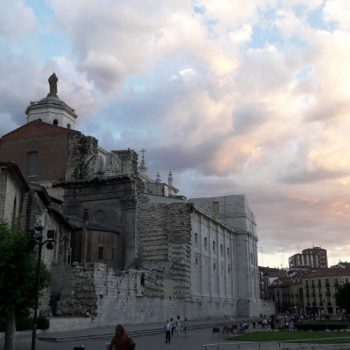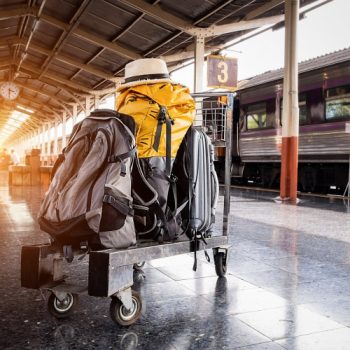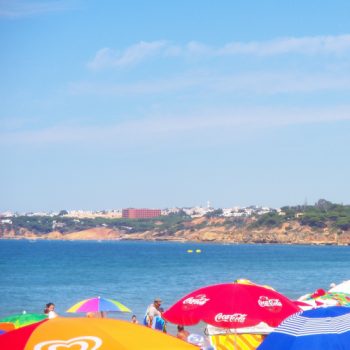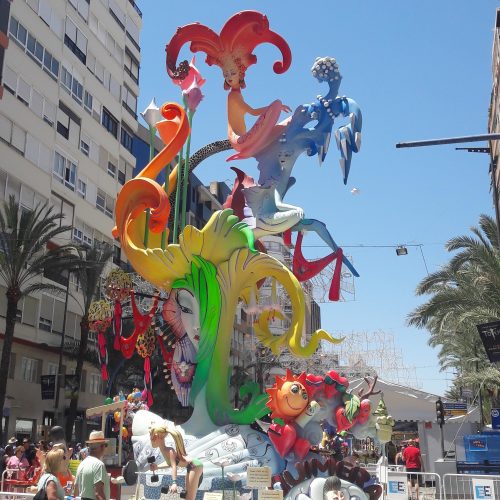
What are Las Hogueras in Alicante, Spain?
Las Hogueras de San Juan (Les Fogueres de Sant Joan) in Alicante
This week we’ll be taking a break from our typical destination-focused Soñando Sunday to share with you Alicante’s unique celebration of San Juan—Las Hogueras (in Spanish) or Les Fogueres (in Valenciano, the language of the Valencia comunidad). Both hogueras and fogueres mean ‘bonfires’ and in this way the celebration is similar to other celebrations of San Juan. However, in Alicante the festivities generally last for about a week and are much more spectacular than what you can expect elsewhere.
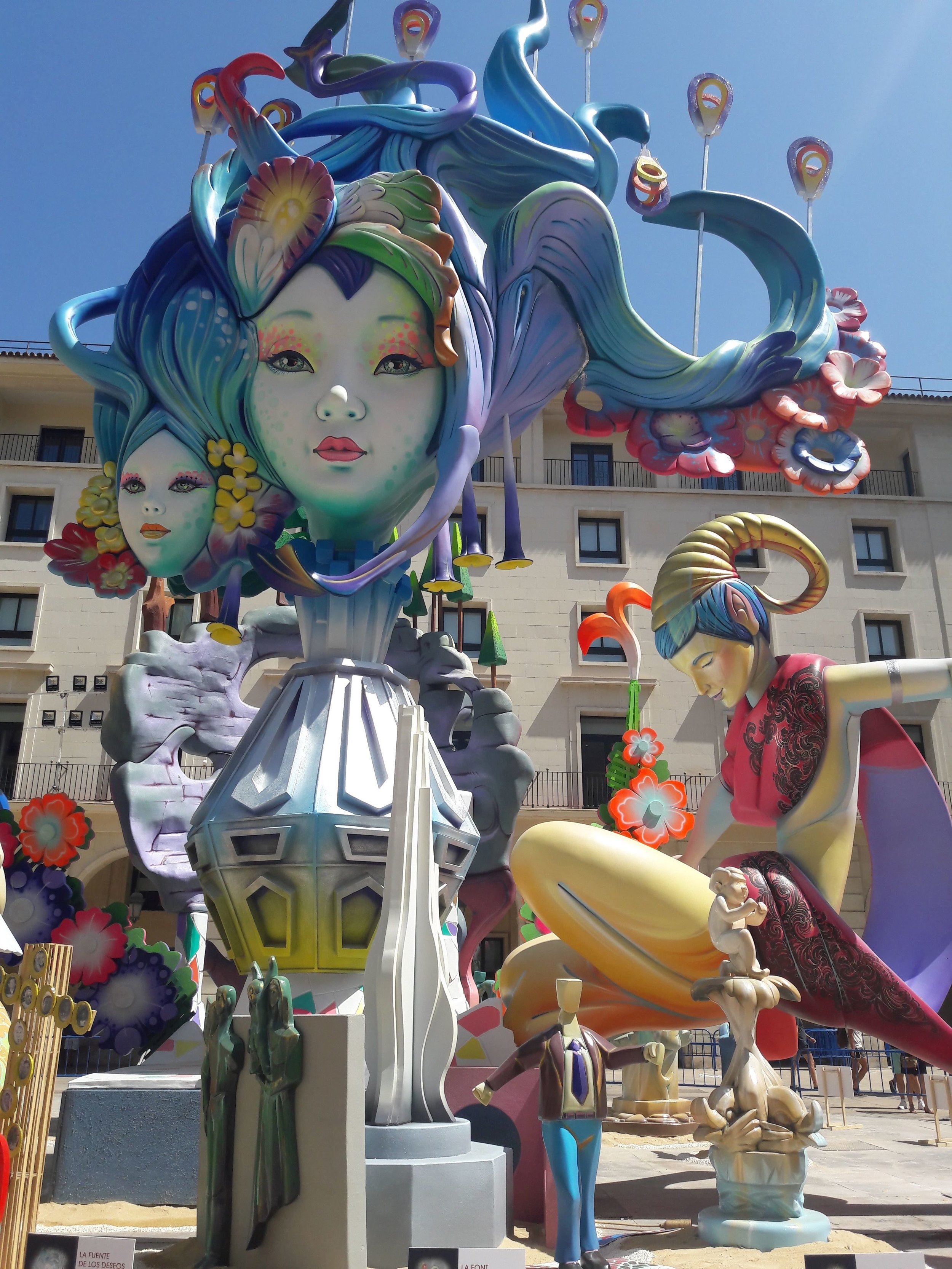 The Program
The Program
This year, Las Hogueras will be celebrated from Thursday, June 20th until Tuesday, June 25th. As you may recall from our post about San Juan last year, June 24th is the feast day of St. John the Baptist (known as ‘San Juan’ in the Spanish-speaking world) and this is celebrated in many places across Spain (especially coastal cities and towns) with bonfires on the eve of the feast day (June 23rd). You can expect the same to happen in Alicante, however this is just one of the many happenings of the week.
What really sets Alicante’s San Juan celebration apart from other cities (except perhaps Estepona where a smaller, but similar celebration takes place) is the tradition of ninots. If you’re familiar with the tradition of Las Fallas in Valencia, the concept is quite similar. Each year, dozens of large papier-mâché statues (ninots) are created to portray thought-provoking, often politically-driven scenes and they enter into a competition of various categories to be selected as the ninot of the year. Winning is of the utmost honor as each and every ninot, save the year’s winner, will be burned to the ground at the end of the Hogueras celebration! You can see images of the 2019 winning ninot as well as a list of the rest of the prize winners here.
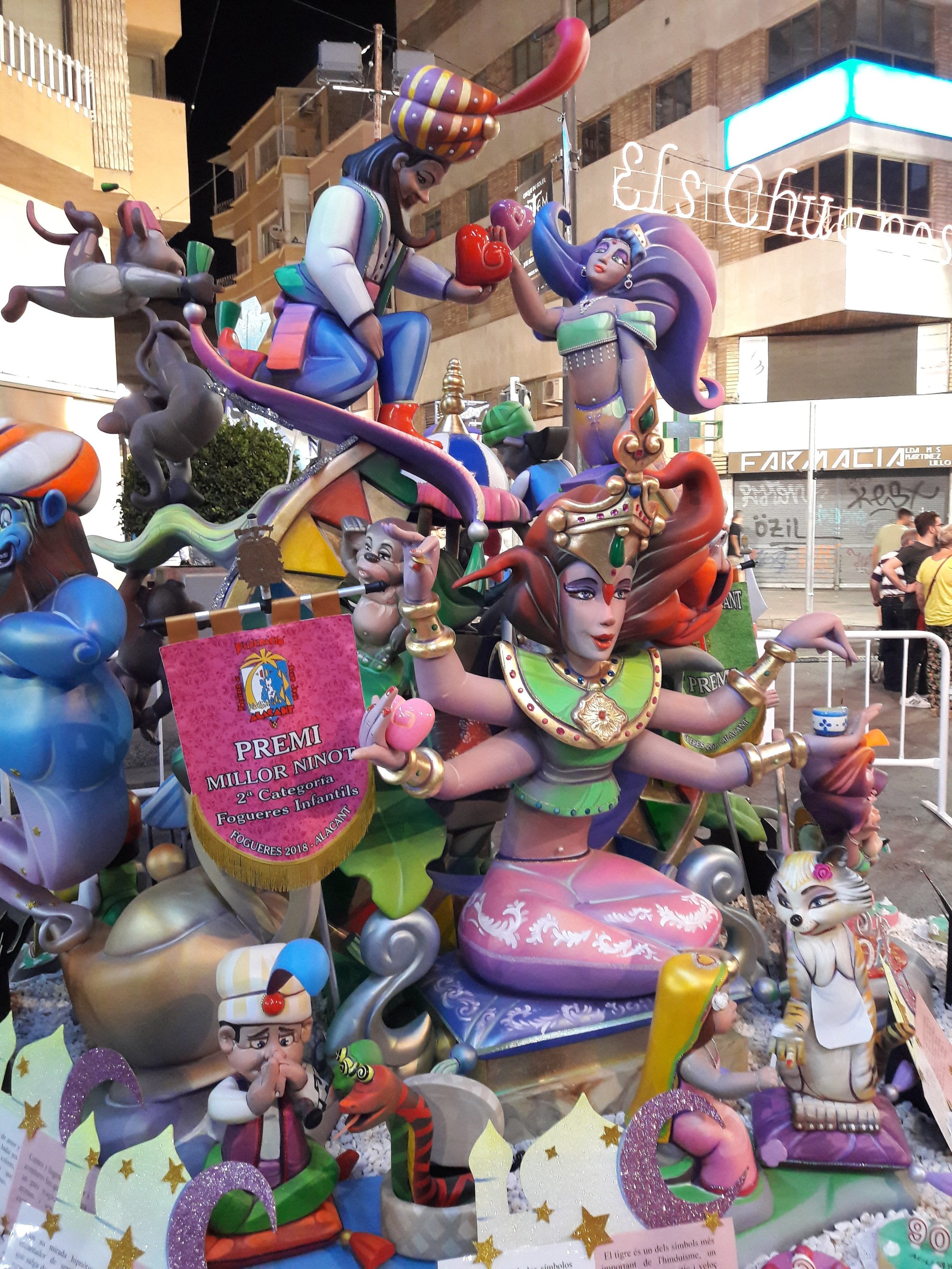 Throughout the week, there are a variety of scheduled events (listed below) but you can also count on food, beverage, music, and dancing in the streets at almost all hours! This is certainly the kind of festival where you can simply wander the streets, take in the ninots, happen upon a parade or two, and experience some of the best aspects of the party without even trying.
Throughout the week, there are a variety of scheduled events (listed below) but you can also count on food, beverage, music, and dancing in the streets at almost all hours! This is certainly the kind of festival where you can simply wander the streets, take in the ninots, happen upon a parade or two, and experience some of the best aspects of the party without even trying.
This year, the racós y barracas (essentially the food stalls and party tents) can sell food and drinks starting on Wednesday without music and starting at 10pm on Thursday (the official start of the celebration) with music. For the rest of the week leading up to the Cremà (the burning), these tents will be allowed to play music and keep the party going until 4:30am each morning! If you’re looking for a good night’s sleep, Alicante is NOT the place to be at this time of year. If you know what you’re getting yourself into, however, it can be a great time!
Main Activities
La Plantà: The main streets will be blocked off from traffic and artists will begin to set up their ninots as early as the night of Monday, June 17th but the festivities will officially begin with La Plantà on the night of Thursday, June 20th. At this time the party will essentially be ‘open for business’ and eating, drinking, dancing, etc will become the norm in the streets at essentially all hours of the day until June 25th.
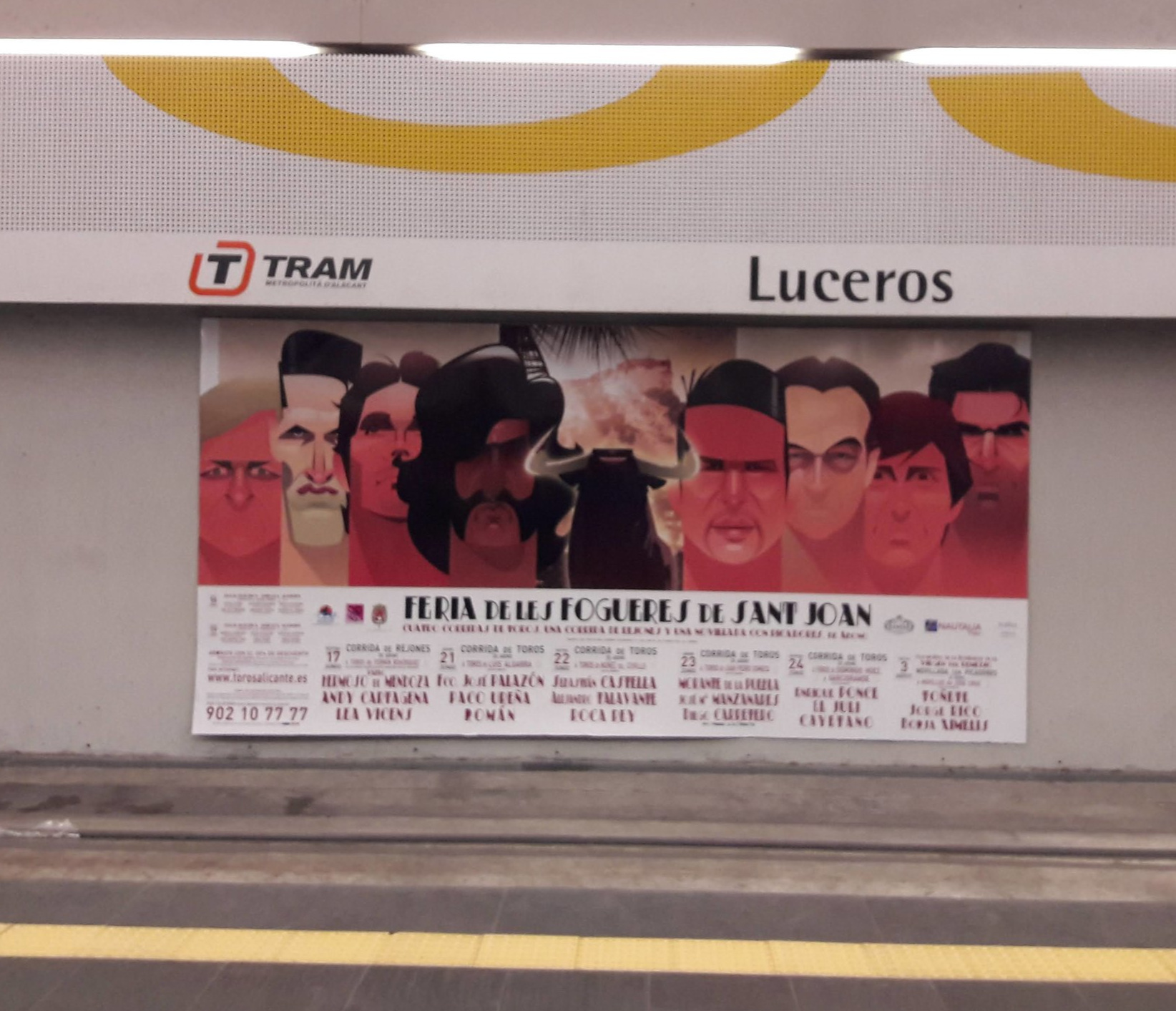 La Mascletà: Each day at exactly 2pm you can expect to hear la mascletà—an impressive firecracker lighting in the Plaza de Luceros square. While it’s interesting to see it up close once if you can, earplugs are recommended if you plan to experience it in the near vicinity. If you can’t specifically make it to the square in time, not to fear—you’re sure to hear the mascletá from wherever you may find yourself in the city! As the official website states, it’s hard to put into words what the experience of the mascletà is really like, but this page (written in Spanish) does a nice job of describing it.
La Mascletà: Each day at exactly 2pm you can expect to hear la mascletà—an impressive firecracker lighting in the Plaza de Luceros square. While it’s interesting to see it up close once if you can, earplugs are recommended if you plan to experience it in the near vicinity. If you can’t specifically make it to the square in time, not to fear—you’re sure to hear the mascletá from wherever you may find yourself in the city! As the official website states, it’s hard to put into words what the experience of the mascletà is really like, but this page (written in Spanish) does a nice job of describing it.
Noche de San Juan: Like in many other cities, the night of June 23rd is celebrated by enjoying food, fun, and fires on the beach with family and friends. If you’re in Alicante, there are essentially two different styles of this celebration to choose from: you can take the TRAM out to some of Alicante’s pueblos where the celebration is more family-friendly and quieter (unless you’re near bars or beach-goers with music and dancing, of course) or you can hit the main city beach (La Postiguet) for a big rave-style bonfire bash on the beach. At Postiguet beach, you’ll find the younger crowd (as well as the more touristy crowd) enjoying lots of drinks and an official deejay-ed party.
La Cremà: The culmination of Las Hogueras is the ceremonious Cremà, or burning of the ninots. At midnight between June 24th and 25th, you can expect everyone in Alicante to be on the streets to experience this spectacular event. If you thought the mascletà was difficult to explain, the cremà is truly indescribable! Although it takes a while for the fires to get going, once they reach full-flame you’ll find yourself awe-struck by the rapid destruction of the intricate artwork that was the main focus of the past week. When the flames die down, however, you’re in for the next treat—the locals will yell to the firefighters who are extinguishing the fires to spray the crowd and they WILL in fact do so. Prepare to be drenched (or escape quickly after the firefighters jump into action if you want to avoid this)!
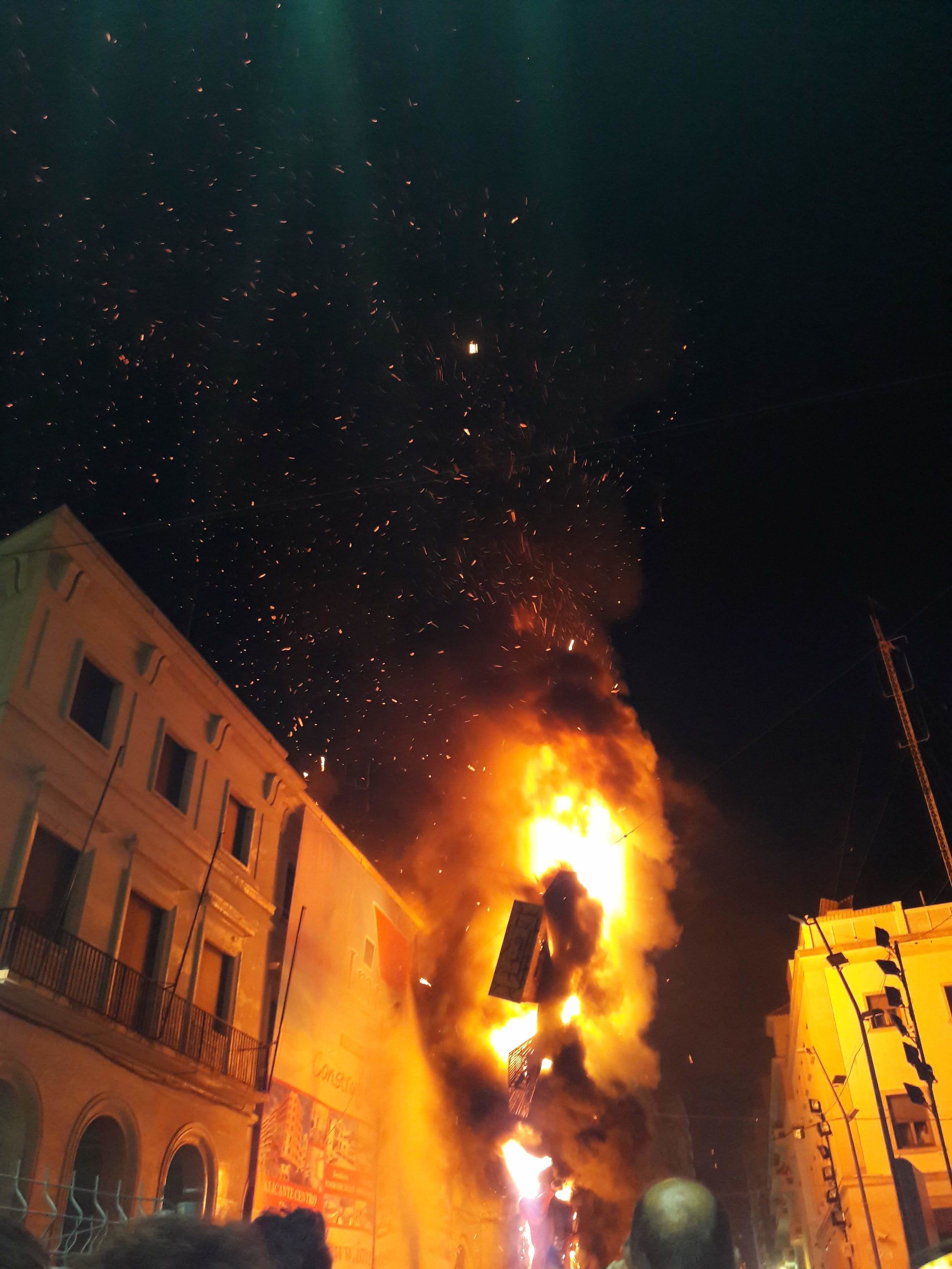 Fireworks at Postiguet Beach: Despite the Hogueras celebration officially ending after the Cremà, you can expect an impressive fireworks display at midnight that night as well as the next five nights. We recommend catching this display from La Rambla the first night so you can easily get to a ninot for the burning which will commence directly afterwards. If you’re around for one of the following nights, it’s a great idea to head to Postiguet beach where people will gather for the best view of the fireworks display over the water and in front of the Santa Barbara castle.
Fireworks at Postiguet Beach: Despite the Hogueras celebration officially ending after the Cremà, you can expect an impressive fireworks display at midnight that night as well as the next five nights. We recommend catching this display from La Rambla the first night so you can easily get to a ninot for the burning which will commence directly afterwards. If you’re around for one of the following nights, it’s a great idea to head to Postiguet beach where people will gather for the best view of the fireworks display over the water and in front of the Santa Barbara castle.
As you can imagine, Las Hogueras is one of Alicante’s biggest celebrations of the year so be sure to book accommodations well in advance (and expect to pay more than at other times of the year). There is truly a lot to enjoy during Las Hogueras but also keep in mind that the city you experience during the festival is not the same city you would experience at other times of the year. To experience the every-day Alicante, I highly recommend visiting at another time of the year as well!
Resources Used:
https://hogueras.com/
https://www.visitvalencia.com/en/events-valencia/festivities/the-fallas


